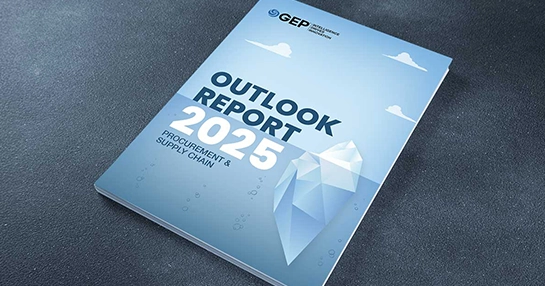
Agentic AI in Spend Analysis for Smarter Procurement
- Agentic AI transforms procurement compliance from periodic audits to real-time autonomous monitoring.
- Supply chain disruptions cost companies close to $200 million annually, making AI risk prediction essential.
- Integrated systems deliver 40% faster AI value than fragmented procurement approaches.
October 08, 2025 | Technology 6 minutes read
Businesses report significant losses from fragmented spending and missed consolidation opportunities. No wonder why agentic AI for spend analysis is becoming a critical focus for business leaders. It has gone from being a test technology to a useful tool for improving financial performance.
Agentic AI in Spend Analysis: Key Differentiators
Unlike traditional analytics that require constant human oversisght, agentic AI operates with strategic autonomy. Agentic AI works on its own, without needing constant human supervision like traditional analytics do. These systems don't just process data; they also work toward business goals on their own, making choices that used to require whole procurement teams.
Automated Compliance with Procurement Policies
Compliance failures cost enterprises millions in regulatory fines and operational inefficiencies. Agentic AI transforms policy enforcement from a resource-intensive audit function into an autonomous governance system. It also monitors every transaction against corporate policies, regulatory requirements, and contractual obligations in real time.
Think about how this changes the way you manage risk. What's happening here is that the system sends instant alerts if thresholds are breached or if spending patterns indicate potential fraud. The system learns from each intervention, strengthening controls where risks concentrate while streamlining processes in stable areas.
Don’t Wait To Be Disrupted. Make a Move.
Explore how autonomous AI agents augment spend analysis for procurement transformation
Real-Time Actionable Guidance
Strategic decisions need timely information. Agentic AI provides the information that's needed right when the market changes or new opportunities come up. When the prices of commodities go up, the system can quickly figure out how it will affect all the categories and then suggest hedging strategies based on how much risk the user is willing to take.
This intelligence adapts to organizational hierarchy. Procurement directors can see detailed metrics on how well suppliers are doing, but C-suite executives get general information on how to optimize working capital and find strategic sourcing opportunities. The AI knows that different people who are involved need to see the same spend data in different ways.
Constant Learning and Improvement
With every decision, approval, and exception, the system increases its depth of learning on organizational priorities; and this compounds value over time. The AI that starts by identifying duplicate payments evolves to predict cash flow requirements and recommend optimal payment timing strategies.
The system's intelligence continues to grow simultaneously across multiple vectors. It refines supplier risk models based on performance history, adjusts categorization logic based on business context, and improves forecast accuracy through pattern recognition. This evolution happens without IT intervention or system upgrades.
Real-World Applications: How Agentic AI Is Driving Results
Companies that use agentic AI say that it pays off in a few months, not years. The technology adds value in many ways that add up over time.
Autonomous Spend Categorization
Misclassified spending undermines strategic decisions. When businesses lose track of their money, they simply can't optimize how it's spent. Agentic AI can eliminate this blind spot through intelligent categorization that typically achieves accuracy levels exceeding 95%. And that's quite a boost to category management for a business.
The business impact extends beyond clean reporting. Accurate categorization can bring up hidden leverage in negotiations, identify maverick spending that bypasses preferred agreements, and find opportunities for demand aggregation. According to GEP's analysis, companies implementing AI-driven spend classification report average savings of 3-5% through improved visibility alone.
Dynamic Spend Insights and Predictive Forecasting
More and more, board-level discussions are about predictive insights instead of past performance. Agentic AI makes predictions about future spending with never-before-seen accuracy by taking into account market changes, supplier risks, and internal demand patterns.
These predictions lead to proactive strategies. For example, if the AI system forecasts a 15% increase in logistics costs four months out, the enterprise can accordingly tweak pricing strategies, renegotiate carrier contracts, or shift fulfillment models before margins begin to erode. AI systems tend to fine tune models round the clock, learning the indicators that can best predict cost fluctuations in each category.
Supplier and Risk Intelligence Management
Supply chain disruptions that happen across the world cost companies $200 million annually, according to a recent estimate, with some studies reporting losses around 8% of annual revenue for affected businesses. Agentic AI monitors thousands of risk indicators across entire supplier networks, from financial health metrics to geopolitical developments. The system can accurately keep track of real-time risk scores that reflect current conditions, not just last quarter's assessment.
When the risks finally surface, the enterprise is already strategically ready with a response, with the AI system identifying qualified alternative suppliers, calculating switching costs, and so on. This effectively transforms crisis management from scrambled reactions into exigency plans executed precisely.
Don’t Let Procurement Become a Hidden Barrier and Hold You Back
Explore how you can use AI to transform procurement workflows across the source-to-pay process
Addressing Challenges: Key Considerations for Successful Implementation
Executive sponsors need to know that deploying agentic AI successfully takes more than just money for technology. Those that realize maximum value address fundamental enablers before implementation.
Data Quality and Accuracy Concerns
Poor data quality undermines AI effectiveness and can amplify bad decisions at scale. Companies need to set up data governance frameworks that make sure all of their systems work together. This investment in data infrastructure pays off in more ways than just AI implementation; it also makes operations more visible.
Leading implementations include data quality scorecards in executive dashboards. When data adheres to predefined quality parameters, insights transform into precise inputs for strategic decisions.
Bridging Integration Gaps Between Systems
Enterprise spending data resides across ERP systems, procurement platforms, and financial applications. Agentic AI needs unified access to make full use of its capabilities. Companies need to put API development at the top of their list of things to do and build data lakes that bring together information from many different places.
Companies with integrated procurement systems have the potential to achieve 40% faster time-to-value from AI implementations. This initial investment into integration brings capabilities like real-time spending visibility and cross-functional analytics to deliver competitive advantages beyond cost savings.
Seamless Integration: Built-In, Not Add-On
Agentic AI works best when it is built into existing workflows instead of needing separate interfaces. Successful implementations include AI insights in executive dashboards, embed recommendations in approval workflows, and send alerts through established communication channels.
This embedded approach speeds up adoption and ensures AI insights influence actual decisions. When reports automatically incorporate AI-generated forecasts and strategic recommendations appear in familiar formats, the technology becomes more of force multiplier instead of an add-on.
Looking Ahead
The move to agentic AI is a big change in how businesses handle their spending. Tomorrow's market leaders will use AI agents that can independently improve whole supply chains, negotiate contracts within certain limits, and manage complicated sourcing strategies across all of their operations around the world.
Organizations building these capabilities today establish competitive moats that grow wider over time. As their AI systems learn and improve, the gap between AI-enabled enterprises and traditional organizations becomes insurmountable. The strategic question for executive teams isn't whether to adopt agentic AI, but how rapidly they can deploy it to capture first-mover advantages in their industries.
FAQs
Enterprise deployment requires cloud infrastructure capable of processing millions of transactions daily, with redundancy for business continuity. For AI decision-making to work, there also needs to be executive support, dedicated resources for change management, and rules for how to govern it. Most companies roll out new technology in stages across their business units. Most enterprises phase deployment across business units, requiring 6-12 months for full implementation with ROI typically achieved within two quarters.



